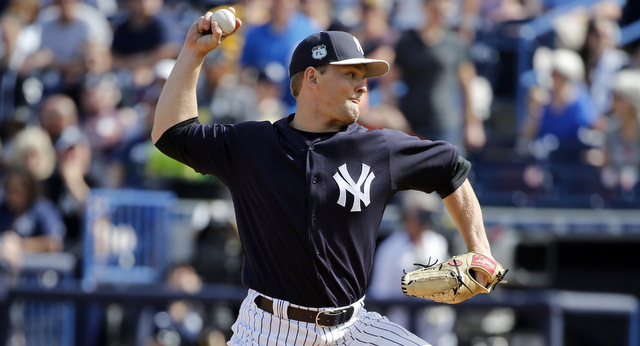Baseball players will lose range of motion in their throwing shoulder and elbow following a pitching session. This loss of range of motion becomes cumulative over the course of a season. Range of motion deficits have been shown to increase the risk of arm injury in baseball players. Baseball stretching routines performed over the course of a season can help reduce this risk. Also, stretching drills during baseball games, or between innings, is another method to combat muscle tightness and loss of range of motion in baseball pitchers.
The two-out drill has been developed by researchers from the California State University in Sacramento, and world-renowned orthopaedic surgeon Dr. James Andrews. These seven baseball stretching exercises can be performed in approximately one minute between innings. During game situations, the drill is initiated after two outs have been recorded and prior to the pitcher taking the mound each inning. Performing this drill has been shown to restore professional baseball pitchers shoulder range of motion back to pre-pitching levels. The seven baseball stretching exercises are described below with a video to follow.
Baseball Stretching: The Two-Out Drill
- Internal rotation stretch. Place the non-throwing hand on top of the throwing elbow with the non- throwing forearm resting on top of the throwing forearm. The non-throwing arm is then used to produce an internal rotation stretch in the throwing shoulder by rotating the forearms down towards the ground. This stretch is held for 3 seconds and is repeated twice with approximately 1 to 2 seconds of rest between stretches. Be sure to stay tall during the stretch and avoid holding your breath.
- Elbow extension stretch. Extend the throwing elbow with the forearm tuned up. With the opposite hand, pull the throwing hand so that the wrist is extended back. This stretch is held for 3 seconds and is repeated twice with approximately 1 to 2 seconds of rest between stretches. Be sure to stay tall during the stretch and avoid holding your breath.
- Big arm circles. Perform big arm circles clockwise and counterclockwise for 5 repetitions each way. Make the circles as big and fast but comfortable, with an emphasis on increasing range of motion. Be sure to stay tall during the exercise.
- Small arm circles. Perform small, tight arm circles clockwise and counterclockwise. Movement is fast but at a comfortable pace. Perform 5 circles forward, and 5 circles in reverse.
- Forearm touch. With the arms up out to the side and elbows bent, move the elbows in so the elbows and forearms touch. Next, move the arms in the opposite direction until a mild stretch is felt in the front of the shoulders or chest. Repeat 5 times continuously.
- 90/90 IR and ER. Begin with the arms up out to the side and elbows bent. Internally and externally rotate the shoulders as far as possible at a fast but comfortable pace. Repeat 5 times continuously. Be sure to stay tall and breathe during the exercise.
- Trunk Rotation. Begin with the arms fully extended and out to the side. Rotate your arms and trunk from side to side, through a full range of motion, to the left and then back to the right. Movement is fast but at a comfortable pace. Repeat 5 times continuously.
Closing Thoughts
Performing the two-out drill with two outs will allow adequate time to prepare the throwing shoulder for the subsequent inning. This may be a practical and effective means to preserve shoulder range of motion throughout the course of a baseball game. Rest and avoiding excessive throwing is undoubtedly the most important factor related to reducing risk for arm injuries in baseball players. However, the two-out drill may help maintain shoulder flexibility during a game, and perhaps over the course of a season. Maintaining shoulder range of motion is just one small piece to minimizing risk for injury in baseball players.
References
- Escamilla RF, Yamashiro K, Mikla T, Collins J, Lieppman K, Andrews JR. Effects of a short-duration stretching drill after pitching on elbow and shoulder range of motion in professional baseball pitchers. Am J Sports Med. 2016;45(3):692-700. doi:10.1177/0363546516671943.
- Reinold MM, Wilk KE, Macrina LC, et al. Changes in shoulder and elbow passive range of motion after pitching in professional baseball players. Am J Sports Med. 2008;36(3):523-527. doi:10.1177/0363546507308935.
- Wilk KE, Macrina LC, Fleisig GS, et al. Correlation of glenohumeral internal rotation deficit and total rotational motion to shoulder injuries in professional baseball pitchers. Am J Sports Med. 2011;39(2):329-335. doi:10.1177/0363546510384223.
- Wilk KE, Macrina LC, Fleisig GS, et al. Deficits in glenohumeral passive range of motion increase risk of elbow injury in professional baseball pitchers: A prospective study. Am J Sports Med. 2014;42(9):2075-2081. doi:10.1177/0363546514538

